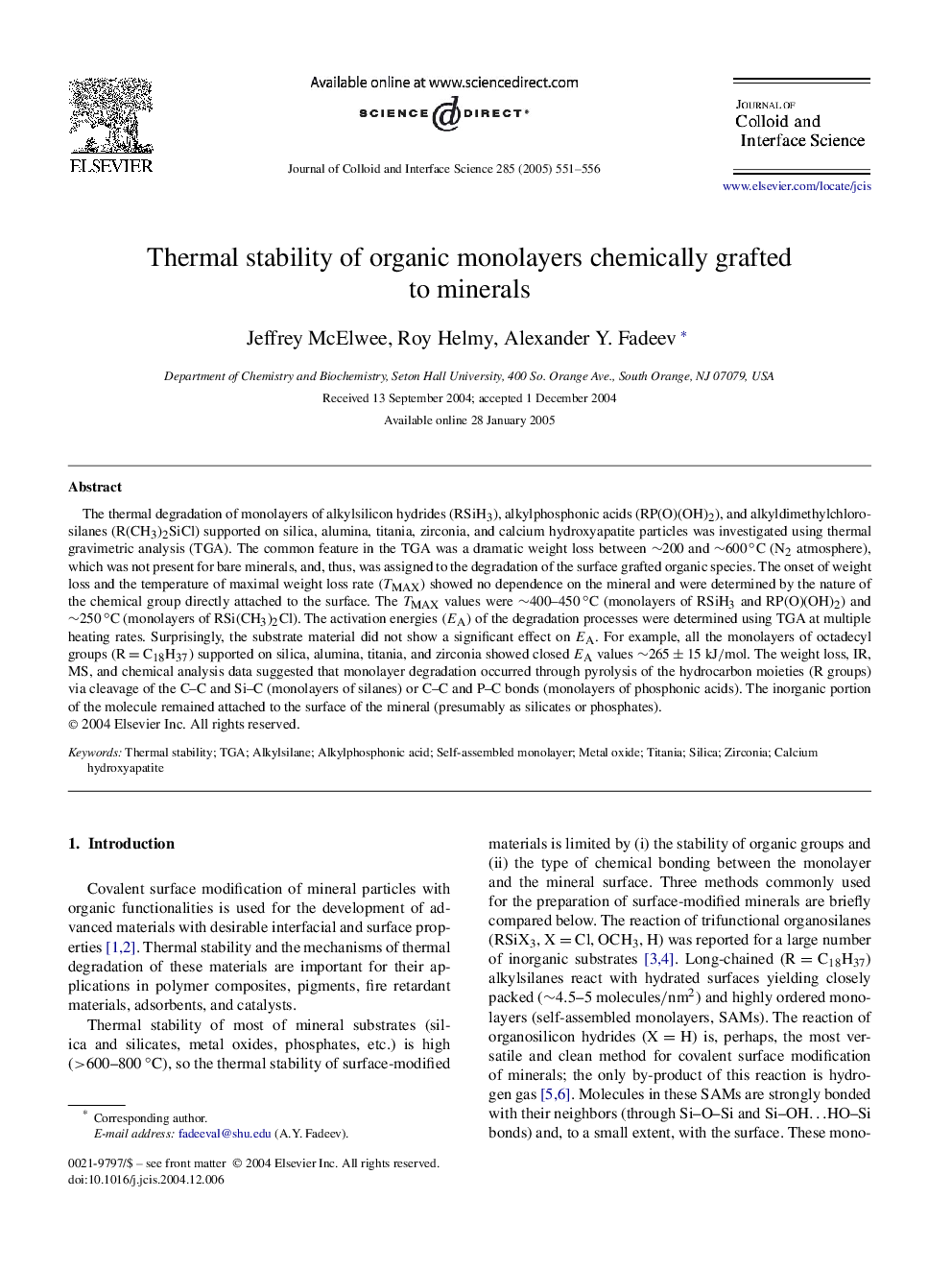| Article ID | Journal | Published Year | Pages | File Type |
|---|---|---|---|---|
| 10377905 | Journal of Colloid and Interface Science | 2005 | 6 Pages |
Abstract
The thermal degradation of monolayers of alkylsilicon hydrides (RSiH3), alkylphosphonic acids (RP(O)(OH)2), and alkyldimethylchlorosilanes (R(CH3)2SiCl) supported on silica, alumina, titania, zirconia, and calcium hydroxyapatite particles was investigated using thermal gravimetric analysis (TGA). The common feature in the TGA was a dramatic weight loss between â¼200 and â¼600â°C (N2 atmosphere), which was not present for bare minerals, and, thus, was assigned to the degradation of the surface grafted organic species. The onset of weight loss and the temperature of maximal weight loss rate (TMAX) showed no dependence on the mineral and were determined by the nature of the chemical group directly attached to the surface. The TMAX values were â¼400-450â°C (monolayers of RSiH3 and RP(O)(OH)2) and â¼250â°C (monolayers of RSi(CH3)2Cl). The activation energies (EA) of the degradation processes were determined using TGA at multiple heating rates. Surprisingly, the substrate material did not show a significant effect on EA. For example, all the monolayers of octadecyl groups (R = C18H37) supported on silica, alumina, titania, and zirconia showed closed EA values â¼265±15kJ/mol. The weight loss, IR, MS, and chemical analysis data suggested that monolayer degradation occurred through pyrolysis of the hydrocarbon moieties (R groups) via cleavage of the CC and SiC (monolayers of silanes) or CC and PC bonds (monolayers of phosphonic acids). The inorganic portion of the molecule remained attached to the surface of the mineral (presumably as silicates or phosphates).
Keywords
Related Topics
Physical Sciences and Engineering
Chemical Engineering
Colloid and Surface Chemistry
Authors
Jeffrey McElwee, Roy Helmy, Alexander Y. Fadeev,
